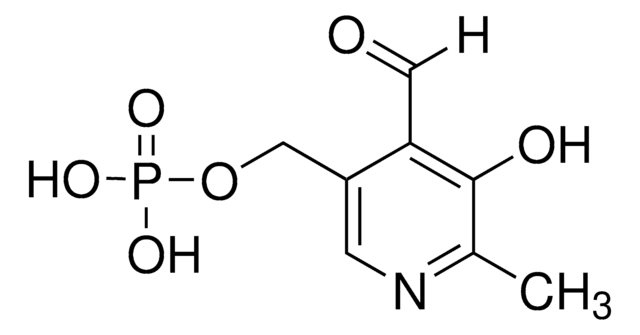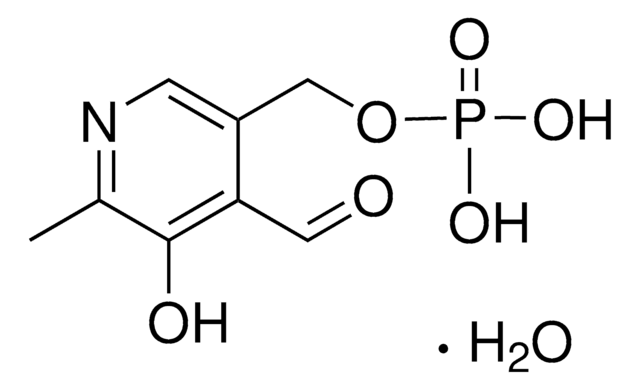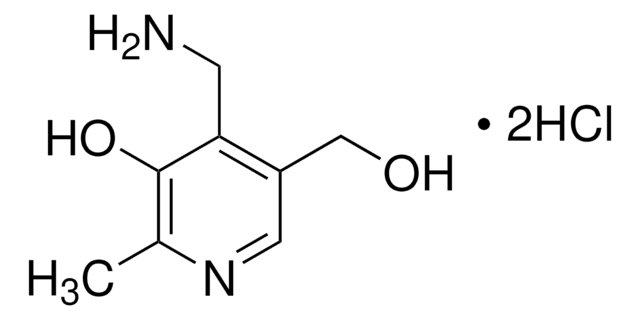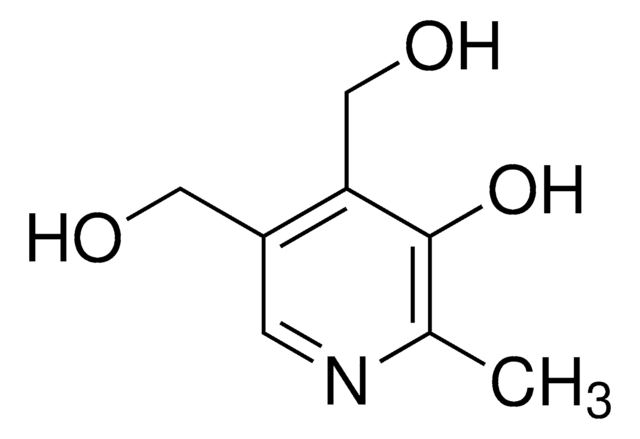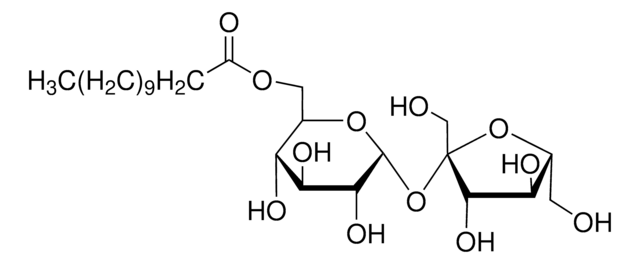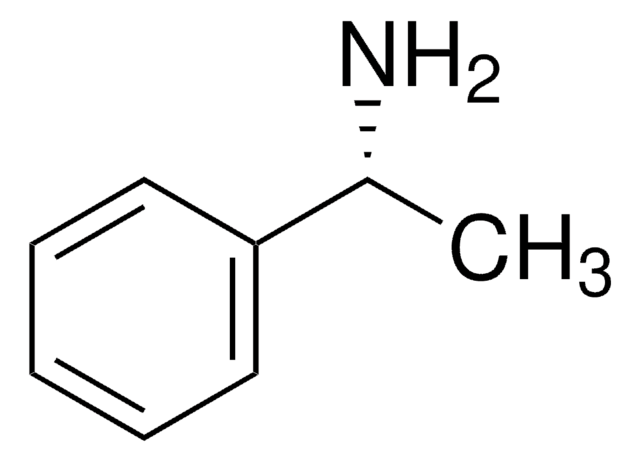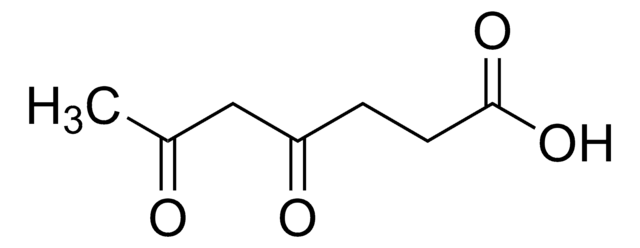P3657
ピリドキサール 5′-リン酸 水和物
powder, BioReagent, suitable for cell culture
別名:
3-ヒドロキシ-2-メチル-5-([ホスホノオキシ]メチル)-4-ピリジンカルボキサルデヒド, PLP, コデカルボキシラーゼ, ピリドキサール 5-リン酸
About This Item
おすすめの製品
製品種目
BioReagent
アッセイ
≥98%
フォーム
powder
分子量
Mw 247.14 g/mol
テクニック
cell culture | mammalian: suitable
色
off-white to yellow-brown
mp
140-143 °C
溶解性
1 M HCl: soluble 50 mg/mL, clear, colorless to light yellow-green
保管温度
−20°C
SMILES記法
CC1=NC=C(COP(O)(O)=O)C(C([H])=O)=C1O
InChI
1S/C8H10NO6P/c1-5-8(11)7(3-10)6(2-9-5)4-15-16(12,13)14/h2-3,11H,4H2,1H3,(H2,12,13,14)
InChI Key
NGVDGCNFYWLIFO-UHFFFAOYSA-N
類似した製品をお探しですか? 訪問 製品比較ガイド
詳細
アプリケーション
- Hierarchical Surface Architecture of Hemodialysis Membranes for Eliminating Homocysteine Based on the Multifunctional Role of Pyridoxal 5′-phosphate.: Discusses the development of advanced hemodialysis membranes using pyridoxal 5′-phosphate, highlighting its role in reducing homocysteine levels, which could contribute to improved outcomes for dialysis patients (Jiang P et al., 2020).
保管分類コード
11 - Combustible Solids
WGK
WGK 3
引火点(°F)
Not applicable
引火点(℃)
Not applicable
個人用保護具 (PPE)
Eyeshields, Gloves, type N95 (US)
適用法令
試験研究用途を考慮した関連法令を主に挙げております。化学物質以外については、一部の情報のみ提供しています。 製品を安全かつ合法的に使用することは、使用者の義務です。最新情報により修正される場合があります。WEBの反映には時間を要することがあるため、適宜SDSをご参照ください。
Jan Code
P3657-1G:
P3657-100MG:
P3657-VAR:
P3657-5G:
P3657-BULK:
P3657-500MG:
この製品を見ている人はこちらもチェック
資料
This page segues to comprehensive insights on how Vitamin B6, Pyridoxal and Pyridoxine affect the performance of serum-free, protein-free cell culture systems used for biomanufacturing heterologous proteins including monoclonal antibodies. The page introduces the in vitro chemistry and biochemistry of pyridoxal, pyridoxine.
Glucose metabolism is regulated by the opposing actions of insulin and glucagon. Insulin is released from pancreatic ß cells in response to high blood glucose levels and regulates glucose metabolism through its actions on muscle, liver, and adipose tissue.
ライフサイエンス、有機合成、材料科学、クロマトグラフィー、分析など、あらゆる分野の研究に経験のあるメンバーがおります。.
製品に関するお問い合わせはこちら(テクニカルサービス)